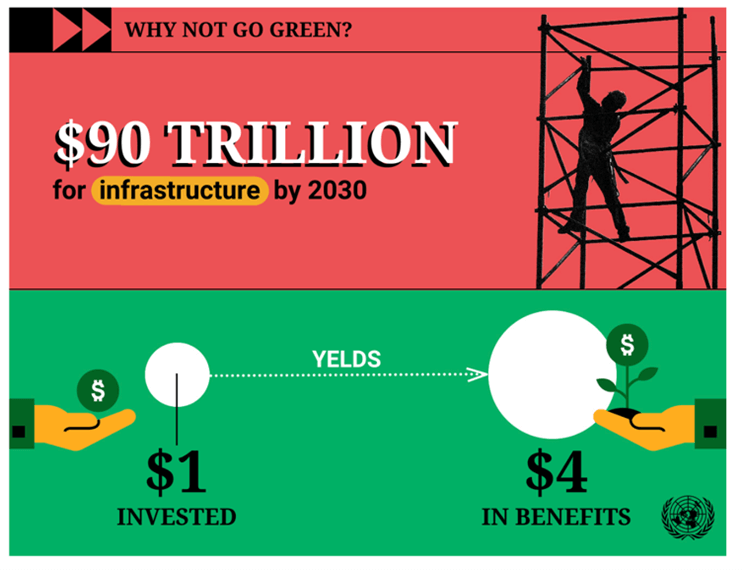Is funding the reason why more is not being done to support climate action?
This is a great question about the cost of taking the action needed on climate change. This is something governments, economists and policy makers everywhere have been thinking about and calculating. It has also been something that those who would prefer to delay taking action on climate change have talked about a lot, saying that the costs of taking action are too large.
Certainly, the costs of decarbonising the global economy are great. The UN calculates that globally, US$125 trillion of investment is needed to achieve net zero by 2050. This is almost $200 trillion, in today’s currency, in Australian dollars. For perspective, about US$453 trillion (AU$720 trillion) of wealth exists in the global economy today. Most investment will be needed in technology for renewable electricity generation, so that we can move away from using fossil fuels for electricity. Currently, globally, we put US$600 billion (AU$953 billion) into decarbonising electricity. By the 2030s, this will need to be $2.2 (AU3$.5) trillion annually.
Related to the cost of decarbonisation, we need to think about the impact climate action would have on jobs. There are estimates that getting to net zero could mean the loss of 187 million jobs globally by 2050. However, there are also projected to be 202 million new jobs, given the need for new large-scale investment in renewable energy.
These are all large figures, that are hard to imagine, however, the best way to think about the cost of climate action is to set it against the cost of not taking action. We know unchecked climate change will mean more extreme weather disasters, reduce the amount of food the world produces, threaten infrastructure, raise insurance costs and claims and, force large numbers of people to migrate, all increasingly damaging economies. Although there is much difficulty and uncertainty about predicting a cost of inaction, one estimate is that not acting on climate change would cost US$178 trillion (AU$283 trillion) globally over the next 50 years. Research has been telling us ever more clearly that the costs of inaction are greater than the costs of action. By not acting, we will also miss out on the investment, innovation and jobs that the global transformation to clean energy will bring. Even more importantly, investing early in climate action will actually have economic benefits. The UN estimates that for every US1$ invested in the ‘green economy’ there will be $4 of benefits.

Therefore although we hear much about the cost of dealing with climate change, it’s wrong to say that the cost of acting to keep temperatures down is too much. In fact, it’s the other way around: if we act now we could be better off, globally, and if we delay action, dealing with climate change will cost us much more in the long run.











